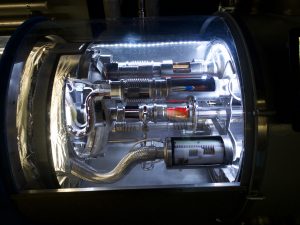
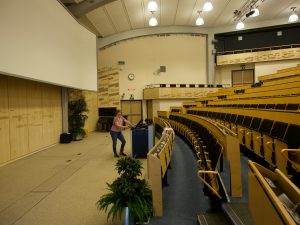
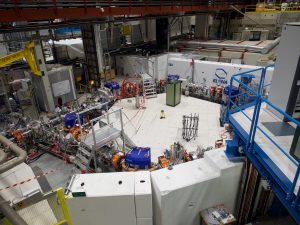
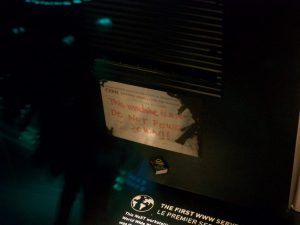
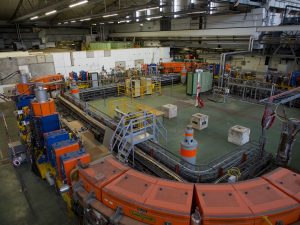
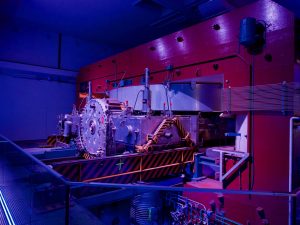
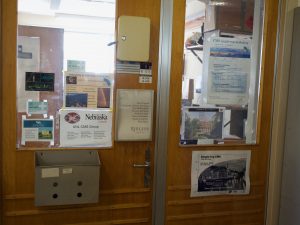
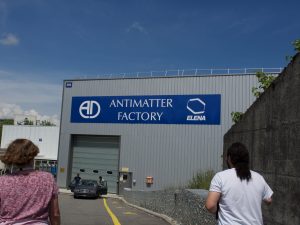
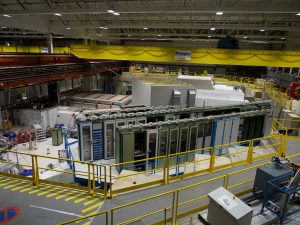
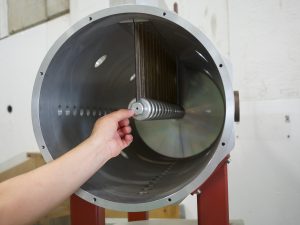
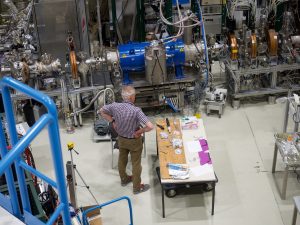
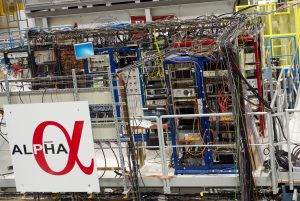
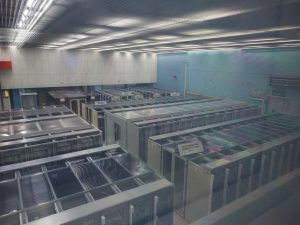
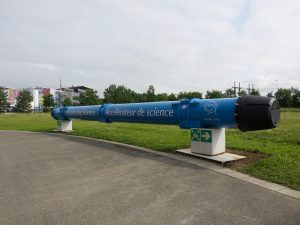
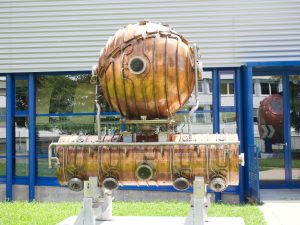
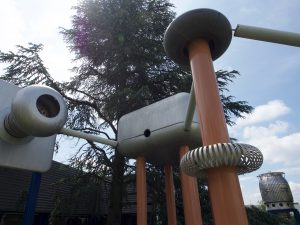
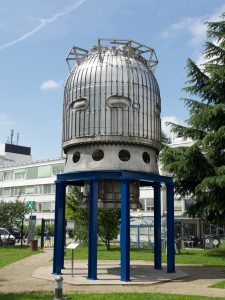
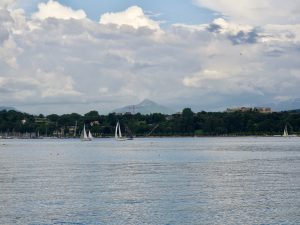
We slept well despite a pretty continuously high noise level coming up from the plaza four stories below our hotel room window, and were up and running by 8:30 or so, supplied with hotel room tea & coffee and yogurt. We walked to the train station where the trams for CERN depart, and got to the visitor center a little bit before 10. There, we were met by our guide, Jose, a graduate student from UNL who is finishing his thesis on high-energy physics with a two-year stint at CERN. He took the entire day off to show us around! It was amazing, although I am not going to try to include everything I learned about particle physics in the course of the day in this journal!
We started out in the ATLAS building, where we watched a 3D movie introducing the whole idea and history of the Large Hadron Collider and its predecessors since the first collider was built in 1957. The building also featured a large-scale model of the ATLAS portion of the collider, so we could imagine a little bit of what we‘d see 90 feet below in the big tunnel that makes a large 17-mile/27 km circle.
Then Jose took us to the building where visitors can actually see a real particle accelerator—the 1957 one, long decommissioned and now set up so that a laser simulation shows you on its outside what was going on on the inside. Very cool! And then we went to the exhibit within the large wooden „Globe“ (built just to hold a science exhibit) where we learned more about particles, got to see a cloud chamber (I had never seen one and didn‘t know you could see electrons in motion with the help of one!). We also saw, among other things the server for the original World Wide Web, which was famously started at CERN to ease communication among the various physicists working on this research the world over.
We also saw lots of tubes full of magnets and wires and cables with highly specialized names and functions. Some things definitely looked like parts of wildly improbable space ships out of a Sci Fi movie! But I found out that things around high voltage are round and bubbly for a reason. And I also got to stand at the podium where the official sighting of the Higgs-Bosun particle with the help of the Large Hadron Collider was announced in 2012! Mark and I both still remembered the footage from that press conference, and Mark recognized the space right away.
Then, Jose took us to the (very busy) CERN cafeteria for lunch and showed us the office that he and the other UNL students and postdocs share. After lunch, we saw LEIR — Low Energy Ion Ring—which is a sort of pre-acceleration ring which makes packets of ions that are needed before the electrons are sent off to the LHC. This was actually running, although of course we had to take Jose‘s word for it. The building with the LEIR ring actually has a display of a hydrogen bottle the size of the one that „feeds“ the collider for about ten years—mindboggling— and more tubes and magnets to gawk over.
Then we went to the antimatter factory, where they can now keep an anti-hydrogen atom alive for 16 minutes. We had a tour with a bunch of students from the Physics Society at the University of Hull and a Polish tour guide, who showed us how the ELENA synchrotron, another little ring full of tubes, wires, and magnets, can make and slow down antiprotons. We also saw where they do antimatter spectroscopy, not to mention quite a few of construction shops that looked like larger versions of Mark‘s office with extra aluminum foil. I heroically repressed the urge to make a lot of jokes about anti-boxes full of anti-matter, since there was really an amazing amount of stuff in the building.
The last stop was at the CERN data center, where we got to see the enormous hall of computers and a slide show that was supposed to give us a sense of the enormous amount of data. But the fun stuff in the room was the older technology that couldn‘t really process any of this data fast enough—now, with many universities and their supercomputers helping, they finally can process a year‘s worth of data collection within a year.
Our gracious guide took us back to the visitor center, and we took the tram back at about 6 pm. The weather had gotten very hot, so we changed into lighter clothes, grabbed some to-go food from a nearby supermarket (salad, fruit, a large subway sandwich) and had it on a park bench at the Parc Mon Repos at the side of the lake. Then we took a lovely walk along the lakeside, and for the first 20 minutes or so we could even see Mont Blanc in the distance, before it clouded over again. We got back to the rue de la Navigation at about 8:30 as it got windy again and started thundering, but we never got rained on and even had time to get some gelato before returning to the hotel room for the night.